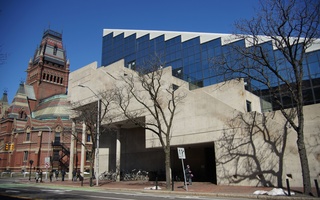The facades of Harvard's buildings have often reflected the changing views of those within.
The Georgian revival architecture of the early 20th century, seen in buildings like the Emerson Hall, could be viewed as a manifestation of the conservative values of an institution once representative of a small, elite segment of society.
And modernist buildings like the Science Center or the Holyoke Center--erected in the '60s and early '70s--reflected a rebellious Harvard willing to break with its traditionalist past and embrace new modes of thought.
But a backlash to this new and controversial architectural style dampened the innovative spirit.
Now, after multiple decades of "non-confrontational" architecture, Harvard is once again pursuing bold designs, with international architects at the lead.
In the planning stages are a glass and wire office building on Mt. Auburn Street designed by Viennese architect Hans Hollein and, and a contemporary art gallery on Memorial Drive designed by Renzo Piano, who was responsible for Paris' Georges Pompidou Centre. Both men are recipients of the prestigious Pritzker Prize for architecture.
These projects take a modernist approach to design, using it not just as a means for production but also as an art form in itself.
"These projects give us a chance to realize what we've learned from the past, to move past the non-confrontational buildings of the last few decades," says Scott Levitan, director of University and commercial real estate for the Harvard Planning and Real Estate Office.
Read more in News
Harvard's Glass Flowers To Get New GleamRecommended Articles
-
GSD Gets ‘Lift’ From YoungThe architecture students at the Graduate School of Design (GSD) spend their time thinking about buildings—their form and their function.
-
New GSD Program Aims To Get More ArchitectsBritish-based architectural firm RMJM recently donated $1.5 million to Harvard’s Graduate School of Design (GSD) in an attempt to increase
-
 Intelligent Design: Negotiating the Identity of the Architecture Track
Intelligent Design: Negotiating the Identity of the Architecture Track -
 Calvin Klein Shares Perspective on Design at GSD
Calvin Klein Shares Perspective on Design at GSD -
 Mark Lee to Lead GSD Architecture Department
Mark Lee to Lead GSD Architecture Department













